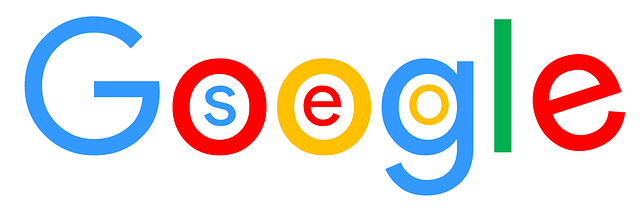Content writing strategically produces high-quality, keyword-optimized content to engage readers and build trust. In today's digital era, integrating keywords naturally improves search engine rankings while diversifying content types fosters broader audience appeal and drives conversions. Effective calls-to-action guide users through the customer journey, and tracking KPIs measures success in engaging audiences and achieving marketing goals through keyword-optimized narratives.
Content writing, an art that seamlessly fuses creativity and strategy, is a powerful tool in today’s digital landscape. It involves crafting engaging, keyword-optimized written material for diverse online mediums, from websites and blogs to social media and emails. More than just wordplay, effective content writing resonates with audiences, guiding them towards desired actions such as subscribing to newsletters or sharing content on their social networks. This article delves into the intricacies of this discipline, exploring strategies to engage audiences across platforms, guide readers through compelling words, optimize for search engines, craft persuasive calls-to-action, and measure success through performance analysis.
- Understanding Content Writing's Creative Strategy
- Engaging Audiences Across Online Platforms
- The Art of Guiding Readers with Words
- Optimizing for Search: Keyword Mastery
- Crafting Calls-to-Action: Driving Engagement
- From Written Words to Social Sharing
- Measuring Success: Content Performance
Understanding Content Writing's Creative Strategy

Content writing is a dynamic process that seamlessly integrates creativity and strategic thinking. It’s about crafting keyword-optimized content that not only captivates readers but also aligns with their needs and search intent. Effective content writers understand that engaging copy goes beyond mere wordplay; it involves leveraging storytelling techniques, addressing pain points, and providing valuable insights to build trust and foster connections.
The art of content writing requires a deep understanding of the target audience, including their preferences, behaviors, and challenges. By optimizing content for mobile platforms, incorporating high-performance web content strategies, and exploring long-form SEO content formats, writers can enhance accessibility and boost engagement. These approaches ensure that the written material not only ranks well in search engines but also resonates with readers across various devices and channels, ultimately guiding them towards desired actions.
Engaging Audiences Across Online Platforms

In today’s digital landscape, engaging audiences across various online platforms requires a strategic approach to content writing. Keyword-optimized content is essential to ensure visibility and attract the right audience. By integrating relevant keywords naturally into your writing, you increase the likelihood of search engines indexing your work, making it easier for potential readers to discover your content. Effective technical content writing goes beyond simply conveying information; it tells a compelling story that resonates with the reader’s needs and interests.
A well-planned Content Calendar for SEO is instrumental in maintaining a consistent flow of engaging Web Content for Engagement. This involves creating a diverse range of content types, from blog posts to social media updates, ensuring each piece aligns with your audience’s preferences and search queries. By diversifying your content, you increase the chances of capturing different user personas, fostering deeper engagement, and ultimately driving conversions whether it’s through newsletter sign-ups, purchases, or social shares.
The Art of Guiding Readers with Words

The art of guiding readers with words is a delicate dance between captivating storytelling and strategic call-to-action. Keyword-optimized content isn’t just about stuffing in relevant terms; it’s about weaving them naturally into narratives that resonate with the audience. Through compelling prose, writers can draw readers into their world, building anticipation and fostering engagement. This is where the magic happens—turning casual browsers into active participants.
Whether crafting an optimized landing page content or refreshing existing material for SEO, the goal remains consistent: to nudge readers towards a desired action. This could be as simple as encouraging them to explore more of your site or as complex as converting them into loyal customers. Mobile content optimization is another facet of this art, ensuring that messages are accessible and actionable across all devices, especially given the increasing mobile web usage.
Optimizing for Search: Keyword Mastery

In the realm of online visibility, optimizing content for search engines is akin to crafting a map that guides potential customers directly to your doorstep. Keyword mastery is the art of weaving relevant terms into your text, ensuring it resonates with both search algorithms and target audiences. Effective keyword optimization involves understanding your audience’s language and incorporating keywords naturally throughout your content, from headlines to meta descriptions. This strategy not only improves online discoverability but also fosters a seamless user experience.
A strategic Content Calendar for SEO can be your compass, mapping out topics and themes that align with your audience’s interests and search trends. Regularly refreshing and updating content as part of a robust Content Strategy for SEO keeps it relevant and engaging, while a keen focus on keyword-optimized content drives traffic and fosters meaningful connections with readers, ultimately guiding them through the customer journey.
Crafting Calls-to-Action: Driving Engagement

Crafting effective calls-to-action (CTAs) is a pivotal aspect of high-performance web content, especially in today’s digital landscape where engagement is key to driving conversions. A well-designed CTA can significantly impact user behavior, encouraging them to take that next desired action. When creating CTAs for keyword-optimized content, it’s essential to ensure they are not only compelling but also strategically aligned with the overall marketing goals.
For instance, on a blog post about “The Benefits of Organic Farming,” a relevant CTA could be “Sign up for our newsletter to receive monthly tips on sustainable agriculture.” This not only guides readers towards further engagement (via the newsletter) but also supports the content’s theme. Website content auditing should regularly assess the performance of these CTAs, tracking click-through rates and conversion data to optimize them over time.
From Written Words to Social Sharing

In the realm of content writing, the goal isn’t merely to craft written words; it’s to create a narrative that captivates readers and inspires them to take action. This transformation from static text to social sharing is powered by understanding your audience’s needs and preferences. Keyword-optimized content that seamlessly integrates relevant SEO terms doesn’t just rank higher in search engines—it also resonates with users, encouraging them to engage, share, and become advocates for your brand.
Content structuring for SEO plays a crucial role in this evolution. Topic clustering, for instance, groups related content together, enhancing user experience (UX-friendly SEO content) and streamlining navigation. By organizing information logically, you guide readers through a journey of discovery, ensuring each step is more engaging than the last. This strategic approach not only boosts online visibility but also fosters meaningful connections with your audience, ultimately converting them from passive readers into active participants in your digital community.
Measuring Success: Content Performance

Measuring success is a crucial step in understanding the impact and effectiveness of content writing efforts. When it comes to evaluating keyword-optimized content, several key performance indicators (KPIs) come into play. These metrics help content creators and marketers gauge whether their strategies are resonating with the target audience. One of the primary methods to measure success is through tracking engagement rates. This includes analyzing page views, time spent on pages, click-through rates (CTRs), and shareable content interactions. High engagement signifies that the content is capturing interest and encouraging audience participation.
Additionally, converting visitors into desired actions is essential. Whether it’s a website sign-up, newsletter subscription, or a purchase, tracking conversion rates provides insights into the overall performance of the content. Topic clustering content strategies, when combined with an optimized content calendar for SEO, can significantly enhance these metrics. Furthermore, leveraging AI-powered content optimization tools allows for data-driven adjustments, ensuring that each piece of content is tailored to resonate with the audience and achieve its intended goals.
